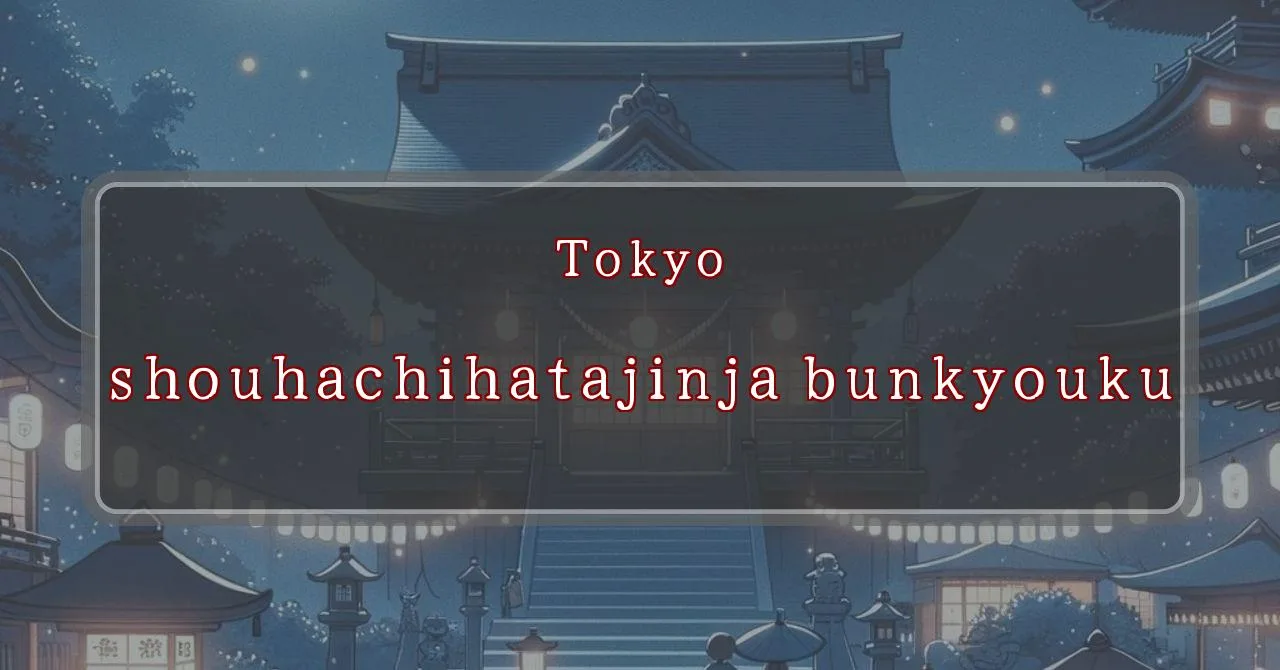Enchanting Shrine Festival in Tokyo: Unveiling the Splendor of Shohachiman Jinja
Basic Information
Shohachiman Jinja is a Shinto shrine located in Sekiguchi, Bunkyo Ward, Tokyo, Japan. It is dedicated to the deity Honda-wake-no-mikoto, the god of war and agriculture.
- Address: 2-3-21 Sekiguchi, Bunkyo-ku, Tokyo 112-0013
- Phone Number: 03-3941-8990
- Access: A 6-minute walk from Edogawabashi Station on the Tokyo Metro Yurakucho Line
- Festival Days: September 15th (Sunday), 2024
Main Events and Attractions of the Festival
The Shohachiman Jinja Festival is an annual event that takes place on September 15th. It is a lively and colorful festival that attracts many visitors from all over Tokyo.
Mikoshi Procession
One of the main highlights of the festival is the mikoshi procession. A mikoshi is a portable shrine that is carried through the streets by a team of people. The mikoshi of Shohachiman Jinja is particularly large and impressive, and it is carried by a team of over 100 people.
Kagura Performance
Another popular attraction of the festival is the kagura performance. Kagura is a traditional Japanese dance that is performed to Shinto music. The kagura performance at Shohachiman Jinja is performed by a group of young women who are dressed in colorful costumes.
Food Stalls
There are also a number of food stalls at the festival, where visitors can enjoy a variety of Japanese street food. Some of the most popular dishes include yakitori (grilled chicken skewers), takoyaki (octopus balls), and taiyaki (fish-shaped cakes filled with sweet bean paste).
Bon Odori
In the evening, there is a bon odori dance festival. Bon odori is a traditional Japanese dance that is performed during the Obon festival, which is a time to remember and honor the dead. The bon odori at Shohachiman Jinja is a lively and festive event that is enjoyed by people of all ages.
Blessings and Deities
Shohachiman Jinja is dedicated to the deity Honda-wake-no-mikoto, the god of war and agriculture. He is also known as Hachiman, and he is one of the most popular deities in Japan. Hachiman is said to bring blessings of victory, success, and prosperity.
- Deity: Honda-wake-no-mikoto (Hachiman)
- Blessings: Victory, success, prosperity
Origin and History
The origins of Shohachiman Jinja are unclear, but it is believed to have been founded in the 16th century. The shrine was originally located in a different part of Bunkyo Ward, but it was moved to its current location in 1937.
- Founded: 16th century
- Moved to current location: 1937
Tips and Notes for Visitors
Here are some tips and notes for visitors to the Shohachiman Jinja Festival:
- The festival is held on September 15th every year.
- The festival is free to attend.
- The festival is a popular event, so it is recommended to arrive early to avoid crowds.
- There are a number of food stalls at the festival, so visitors can enjoy a variety of Japanese street food.
- The festival is a great opportunity to experience Japanese culture and traditions.
Parking Information
There is no parking lot at Shohachiman Jinja. However, there are a number of public parking lots in the area.
- Sekiguchi Parking Lot (5-minute walk from the shrine)
- Edogawabashi Parking Lot (10-minute walk from the shrine)
- Bunkyo Civic Center Parking Lot (15-minute walk from the shrine)
Popular Stalls and Food Carts in Recent Years
| Type of Stall | Description |
|---|---|
| Takoyaki | A staple at Japanese festivals. Characterized by a crispy outside and a creamy inside. |
| Jaga Butter | A simple yet popular snack of hot potatoes lavishly topped with melted butter. |
| Baby Castella | Small castella cakes, sweet and fluffy treats enjoyed by children and adults alike. |
| Grilled Ayu with Salt | Fresh ayu fish grilled whole with salt, a savory taste of Japanese summer. |
| Shaapin | A unique gourmet item influenced by foreign cuisine, with a chewy skin wrapping the filling. |
| Okonomiyaki | A Japanese grilled dish where you often choose your own ingredients for a personalized flavor. |
| Cotton Candy | A fluffy, sweet snack that’s extremely popular with children. |
| Chocolate Banana | A banana coated in chocolate, a fun and visually appealing dessert. |
| Kushiyaki | Various types of ingredients skewered and grilled, an easy-to-enjoy snack. |
| Yakisoba | Fried noodles mixed with a special sauce, a fast food favorite in Japan. |



